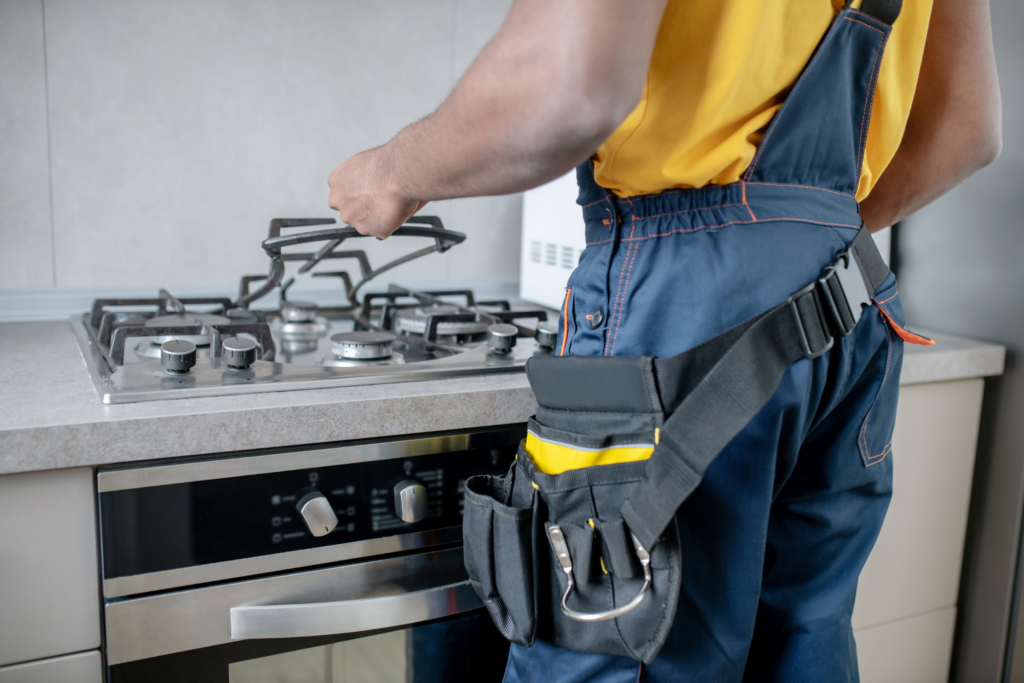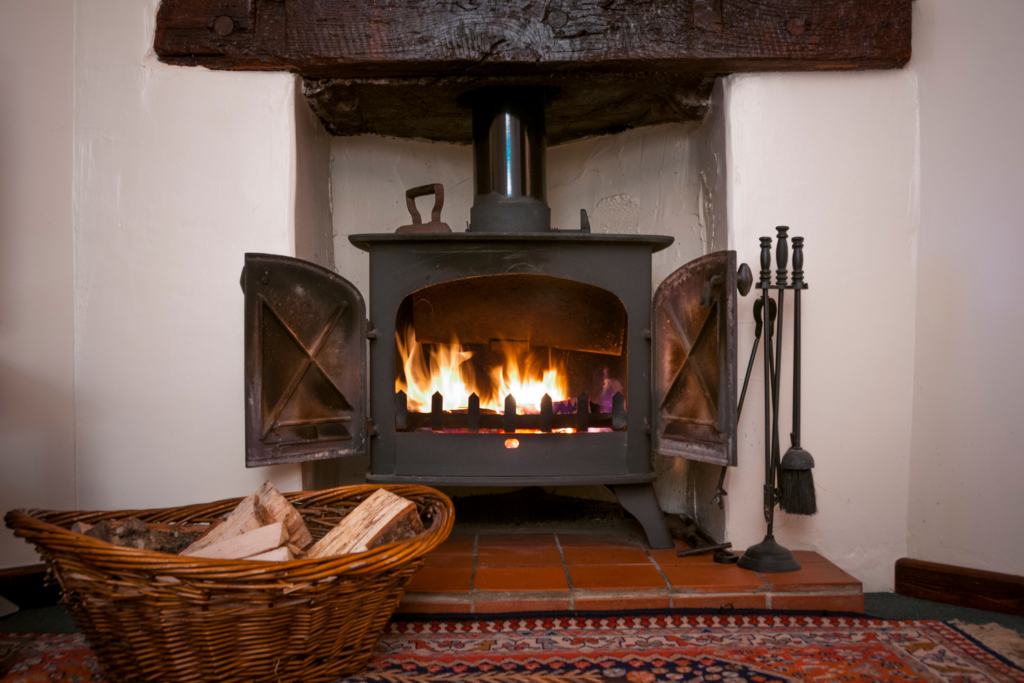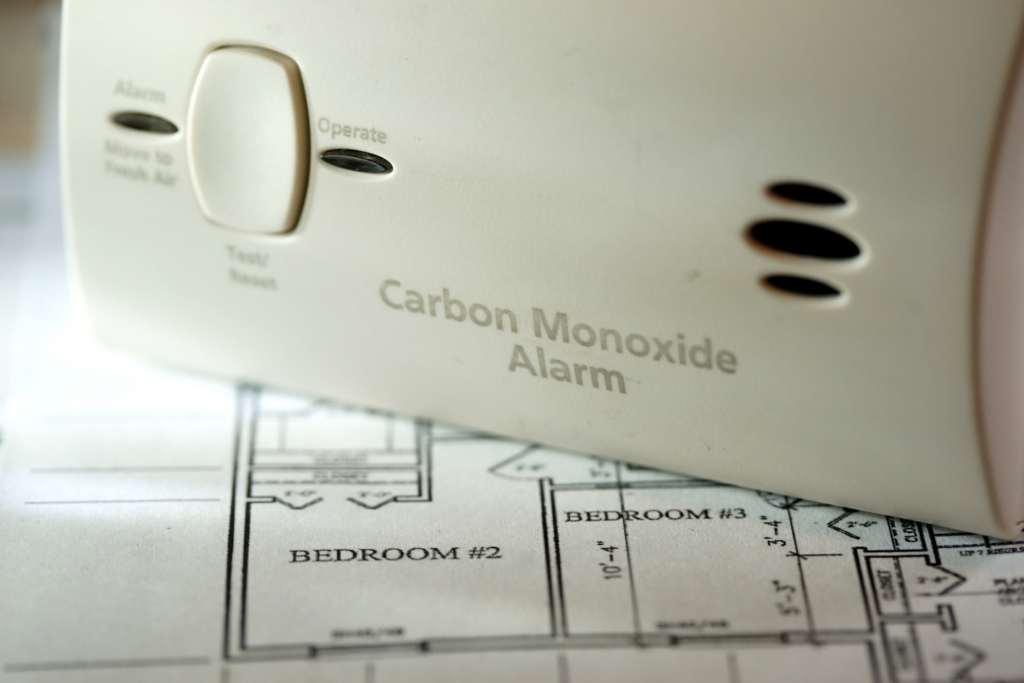How to Prevent Carbon Monoxide Poisoning in Your Home – With Biggest Risks!
Ever heard of the silent-but-deadly menace lurking right in your home? No, it’s not your teenager’s unwashed gym socks – it’s something even scarier: carbon monoxide (CO). This sneaky, odorless, colorless gas slinks out of everyday stuff like your gas stove, furnace, and water heater. Breathe in too much of it, and it’s like the worst party crasher ever – it can cause serious health problems and even be fatal!
You can defend your beloved homestead from this invisible party pooper. All it takes is a bit of regular appliance TLC (aka, maintenance and inspection), some fresh air (ventilation), and your very own carbon monoxide watchdog (a CO detector). Do these, and your home will be a fortress against this gas-guzzling goblin.
As we unravel this knotty issue of fending off CO, you’ll pick up handy tips, safety measures, and crucial warning signs to keep an eye on. With the right know-how and gadgets, you’ll be well-armed to keep this sneaky menace at bay. So, buckle up, safety soldier! It’s time to safeguard your abode and keep it as a safe haven for you and your squad.
Understanding Carbon Monoxide
Picture this: gas so sneaky, you can’t see, taste, or smell it. It comes from things we use every day, like gas ranges, furnaces, water heaters, and even cars idling in garages.
Now, it’s not like we’re living in a horror movie, but you’ve got to be aware of what your appliances might be up to. You see, appliances like your trusty gas stove or furnace, if they’re not properly vented or maintained, can kick up a storm of CO.
And here’s the playbook on how you’re going to run defense:
- Appliance TLC: Give your appliances regular check-ups to make sure they’re not releasing any CO. Treat them right, and they’ll do the same for you.
- Garage Control: That car of yours? It’s a CO factory if it’s left running in the garage. So keep the engine off when it’s parked.
- The Sniff Test: Now, you can’t actually smell CO. But you can feel it. Dizziness, nausea, shortness of breath, and headaches? You might not just be coming down with something, and it could be CO.
Knowing the risks and where CO can come from is half the battle. We’ll dive deeper into some prevention tactics and detection methods in a bit.

Dangers of CO Exposure
Now, what happens if you do breathe in CO? You’re looking at CO poisoning, and trust me, you don’t want that guest at your party. It can mimic the flu or other illnesses, and can really hurt your heart and brain. Little ones are more susceptible, so let’s make sure we keep them safe
Symptoms of CO poisoning include:
- headache
- nausea
- dizziness
- vomiting
- weakness
- confusion
- shortness of breath
- chest pain
It’s important to be aware of these signs so that you can take action as soon as possible if you suspect CO exposure. Remember that your heart and brain are particularly vulnerable to damage caused by CO poisoning, so early detection and treatment are crucial.

Infants and young children may be more susceptible to CO poisoning due to their developing bodies, so it’s essential to ensure their safety by preventing CO exposure in your home. In terms of preventing CO-related incidents, installing a carbon monoxide monitor is an effective way to detect any dangerous levels of CO in your living space. Make sure to place the monitor at least 5 feet above the ground and near sleeping areas or any gas- or wood-burning appliances.
In addition to having a CO monitor, it’s wise to have your home heating equipment inspected annually to prevent potential CO leaks. Besides, make sure to test your CO detector at least once a month to ensure it’s working correctly.
Knowing the dangers of CO exposure and the symptoms of CO poisoning is half the battle. As you continue to learn more about this silent threat, we’ll now move on to discuss strategies for safeguarding your home and loved ones from potential CO exposure.
Risks in the House
Garage and Cars
Cars are CO factories. If they’re left running in a garage or an enclosed space, they’re filling it up with CO.

Appliances and Heating Systems
Anything that uses gas, like your range or oven, needs to be installed and maintained properly. Your heaters and furnaces too. Blocked vents can mean a buildup of CO.
Generators
Keep them at least 20 feet away from open windows, doors, or vents. Otherwise, CO can make its way inside your home.
Fireplaces and Chimneys
If you’ve got a wood or charcoal-burning fireplace, keep the flue open. Blocked chimneys can also trap CO.

Prevention Strategies
Proper Ventilation
Proper ventilation is crucial to preventing carbon monoxide poisoning in your home. Ensure that fresh air can easily flow through vents and windows. This helps dilute any buildup of carbon monoxide. Keep in mind that a gas-powered generator must be placed a minimum of 20 feet away from windows, doors, or vents to avoid exhaust fumes from entering your living space.
Regular Maintenance
Schedule regular maintenance for all fuel-burning appliances in your home, such as furnaces, stoves, water heaters, and clothes dryers. Qualified technicians should inspect your heating system and check exhaust systems annually.
By servicing your appliances, you can reduce the risk of CO leakage due to malfunction or wear.
| Appliances | Maintenance Frequency |
|---|---|
| Heating system | Annually |
| Exhaust system | Annually |
| Water heaters | Annually |
| Stoves | Annually |
| Clothes dryers | Annually |
Safe Usage of Fuel-Burning Appliances
Avoid using gas ovens for heating and do not use charcoal grills, hibachis, lanterns, or portable camping stoves indoors. Make sure space heaters are only used when someone is awake and able to monitor them, and maintain adequate airflow in the room.
Invest in a carbon monoxide (CO) detector and place it in your home according to the instructions. Regularly check and replace the batteries, ideally when you change the time on your clocks each spring and fall. If the detector sounds an alarm, immediately leave your home and call 911 or your local fire department.
By following these prevention strategies, you’ll be better equipped to protect your home and loved ones from the dangerous effects of carbon monoxide poisoning. Now that you know how to prevent CO exposure, let’s explore the next crucial topic.
Which carbon monoxide detectors work the best?
Here’s a list of some of the top-rated carbon monoxide detectors available in the market. Remember to always do your current research before buying, as models and technologies may have improved since then:
- Google Nest Protect Smoke and Carbon Monoxide Alarm: This device not only detects both smoke and carbon monoxide, but it also connects to your smartphone so you can monitor your home even when you’re away.
- Kidde Nighthawk Plug-In AC/DC Carbon Monoxide Alarm Detector: This plug-in model comes with a battery backup for continuous monitoring, even during power outages. It also has a digital display that shows CO levels.
- First Alert Onelink Safe & Sound: Another smart device, this detector works with Alexa and Apple HomeKit and even doubles as a speaker.
- First Alert CO605 Plug-In Carbon Monoxide Detector: This easy-to-install device plugs directly into any standard outlet and includes a battery backup for peace of mind during power outages.
Remember, no matter which model you choose, it’s important to install detectors on every level of your home and in central locations like hallways and near sleeping areas. Check the batteries at least twice a year to ensure they’re working properly.

What to Do in Case of CO Detection
If your carbon monoxide (CO) detector starts alarming, don’t panic. Here are the necessary steps you should take in case of CO detection in your home:
First, immediately evacuate your home. Make sure to gather all household members, including pets. Remember to leave doors and windows open on your way out to help ventilate the area and disperse the carbon monoxide.
Once you’re outside and at a safe distance from your home, call 911. Inform the emergency dispatcher of the situation and let them know it’s a possible carbon monoxide poisoning case. They’ll send the fire department or EMS to your location as needed.
While waiting for help to arrive, check yourself and everyone who was inside the house for symptoms of CO poisoning. Common signs include headache, dizziness, weakness, nausea, vomiting, shortness of breath, and confusion. If anyone is unconscious, inform the 911 dispatcher immediately.
When help arrives, professionals from the fire department or EMS will assess the situation and take appropriate action. They might need to investigate the source of the CO leak and ensure your home is safe to re-enter.
In the meantime, if anyone exhibits severe symptoms of CO poisoning, they may need to visit the emergency room to receive appropriate treatment. Medical professionals typically use pure oxygen administered through a mask to treat this condition. In some cases, patients with severe poisoning may require a ventilator or a specialized oxygen chamber for treatment.
By taking these steps, you can ensure the safety and well-being of your family during a CO detection incident. Stay vigilant, maintain your CO detectors regularly, and always have an evacuation plan in place. Now that you’re familiar with what to do in case of CO detection, let’s move on to understanding how to prevent CO poisoning in the first place.
Facts and Myth Busting
First off, let’s clarify what carbon monoxide (CO) is.
Carbon monoxide is a colorless, odorless, and tasteless gas that can be lethal when inhaled in large quantities. It’s often produced by burning fuels like charcoal, propane, kerosene, or gasoline-powered engines. It’s essential to be aware of the risks and know how to prevent CO poisoning.
One common misconception is that using a charcoal grill indoors is safe if the room is well ventilated. However, it’s not just about the smoke or cooking odors. Burning charcoal indoors can produce dangerous levels of CO, even in a well-ventilated room. It’s crucial to always use charcoal grills outdoors in an area with proper air circulation.
Another myth is that it’s safe to use a camp stove or lantern inside a tent or enclosed space. Whether it’s propane, kerosene, or another type of fuel, burning these fuels in confined spaces can lead to CO accumulation and put you at risk for poisoning. You should only use camp stoves and lanterns in well-ventilated outdoor areas.
Vehicles can also be a source of CO, especially when using a gasoline-powered engine. Some people believe that it’s safe to keep the engine running in an attached garage if the door is open. Unfortunately, this can still cause CO buildup inside the garage and adjacent living spaces. Always make sure to turn off engines and do not run them in enclosed spaces like garages or basements.
Lastly, it’s crucial to be aware of the symptoms of CO poisoning. They often resemble flu-like symptoms, such as headache, dizziness, nausea, and confusion. If you suspect that you or someone else is experiencing CO poisoning, leave the area immediately and seek medical help.
Now that we’ve busted some myths, let’s move on to discuss how to detect and prevent CO poisoning in your home.
Let Us Know How We’re Doing!
Did this expertly prepared resource answer your question?
Do you have another question about home maintenance, home improvement projects, home appliance repair, or something else?
Get more information, send in questions and keep the discussion going by contacting the I’ll Just Fix It Myself company customer service team at at 1-800-928-1490 or Email us at [email protected]
